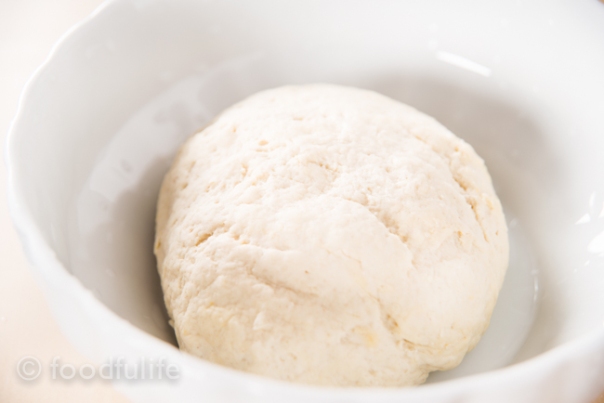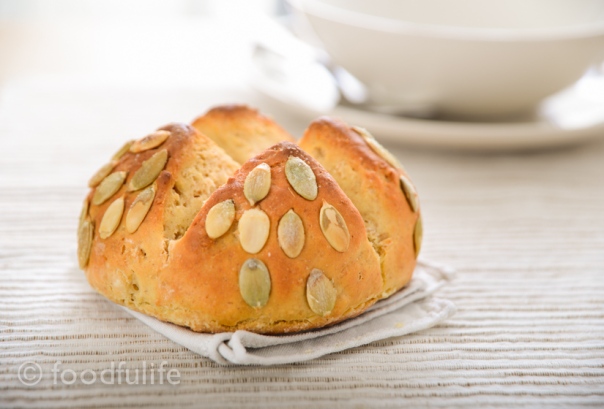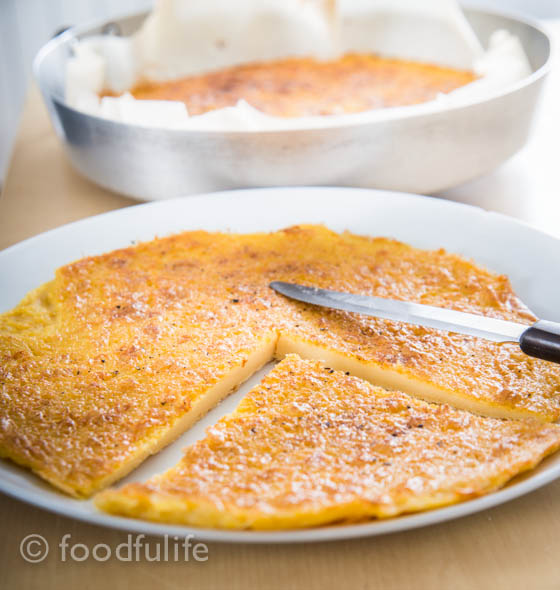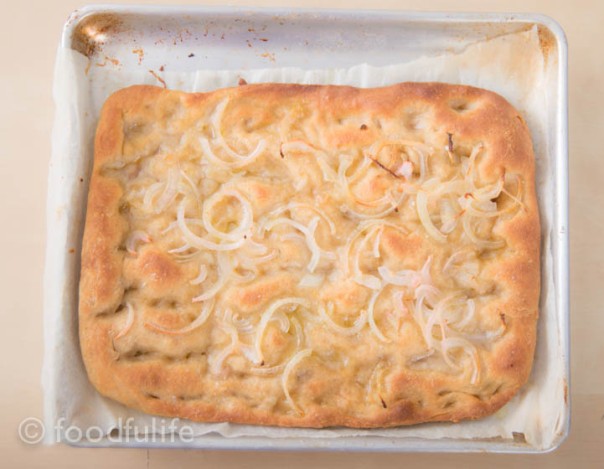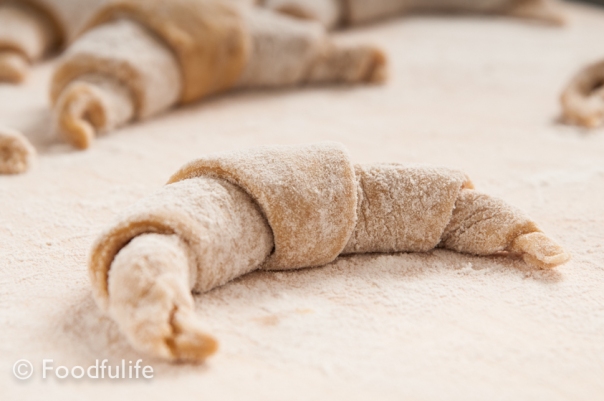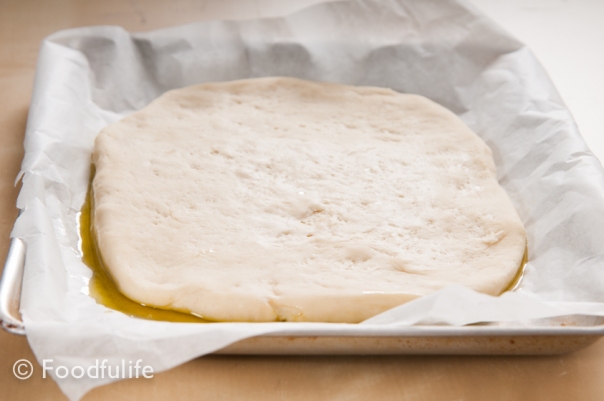This focaccia alla salvia, a typical Genoese focaccia, is very aromatic, wonderful served with cheese, soups and cold cuts. To make this focaccia you follow the focaccia recipe method and then you add the fresh sage at the end. You have to chop the sage really finely, in order to blend it nicely with the dough. The focaccia dough also needs to rise for several hours, so we are going to make a starter that you can make in advance, in order to make the preparation method a little more manageable.
The longer the dough rises, the better the focaccia will become, so don’t rush it! This is why in the traditional method we repeat the leavening process a few times…However you can shorten the process by skipping the second leavening (step 3) and mixing all the flour together straight away, if you don’t have much time.
I suggest you make the focaccia during the weekends (or in your spare time), as it needs to be looked after during the preparation method…It is a long process but it’s worth it!!!
Note. To make the starter there are two options: you can use normal yeast or you can use sourdough.
All you need (for the entire method).
250-300 g plain flour (depending if you use sourdough or yeast)
250 g durum wheat semolina flour
12 g yeast (or 50 g of sourdough)
a big bunch of fresh sage, very finally chopped
fine sea salt
lots of extra virgin olive oil
water
a little sugar
baking sheet
a baking tray (24 cm x 28 cm)
a bowl
cling film
Note. I am going to divide the ingredients and the preparation method into 4 main steps.
HOW TO MAKE SAGE FOCACCIA.
Step 1. Make the starter
For the starter with yeast
Ingredients
100 g plain flour
12 g yeast
water
a little sugar
Method with yeast.
Mix the yeast with a few spoons of warm water, a little flour and a little sugar. When it forms some bubbles add the rest of the flour, more water and work it until you get a small dough (keep it quite moist). Put the dough into a small bowl, then cover it with cling film and let rise overnight at room temperature.
For the starter with sourdough (natural yeast).
Ingredients
50 g plain flour
50 g sourdough
water
a little sugar
Method with sourdough.
Mix the flour, a pinch of sugar and the sourdough with some water, until you get a soft and moist dough. Place in a small bowl, then cover it with cling film and let rise overnight.
Step 2. The first leavening.
Ingredients
the starter we prepared earlier (with yeast or sourdough)
100 g of plain flour
100 g of durum wheat semolina flour
water
a little sugar (to help the leavening process)
Method.
In the morning, mix the starter with 100 g of plain flour, 100 g of durum wheat semolina flour and a little sugar, then add enough water to make a soft dough. Work well, then place the dough in a bowl, cover it with a cling film and let rise until it doubles in volume.
Step 3. The second leavening.
Ingredients
the dough we prepared earlier
100 g plain flour
100 g durum wheat semolina four
water
a little sugar
Method.
Take the dough and add the flour with a little sugar, then mix with enough water and work well. Cover with cling film and let rise until it doubles in volume.
Step 4. Adding all the ingredients and baking.
Ingredients
the dough we prepared earlier
50 g of durum wheat semolina flour
a big bunch of fresh sage, very finely chopped
fine sea salt
50 ml extra virgin olive oil (and you’ll need some more to drizzle before baking)
100 ml of water
Method.
1. This is the final step! Take the dough and mix it with 50 g durum wheat semolina flour, finally chopped fresh sage leaves, some fine sea salt (but we are going to add more later) and mix just enough to blend the ingredients. Add 50 ml of extra virgin olive oil, previously mixed with 100 ml of water. Mix everything (just enough, don’t overwork it or you’ll lose the leavening strength of the dough).
2. Take a baking tray, line with baking paper, drizzle with olive oil and place the dough so that it covers the tray. Let rise for about an hour.
3. Once it has risen, press the dough with the tip of your fingers in order to create wells. Drizzle with more olive oil mixed with water, season with plenty of salt and bake at 200° C (392 °F) for 30-35 minutes.



